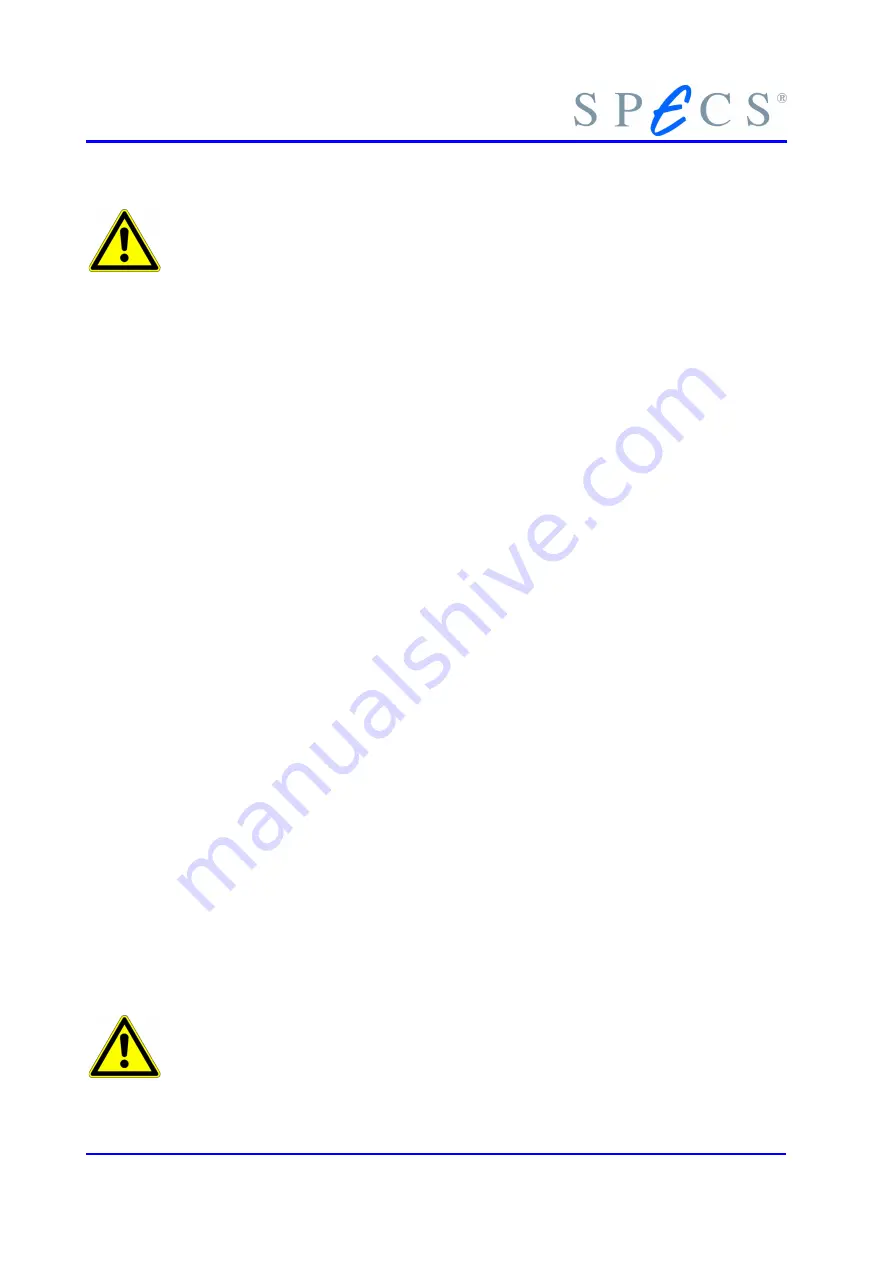
Operation
ENSURE BOTH THE POWER SUPPLY AND CONTROLLER ARE TURNED OFF WHEN THE
JACK SOCKETS ARE INSERTED.
The evaporation should first be established manually (set the PID controller to manual
control and then set the toggle switch to Auto, see section 4.4.1) before handing over
control to the flux controller. The Man/Auto switch has no function and is not connec-
ted when the display only model has been ordered. The PID unit in the flux controller
accepts a 0-10 V voltage at its input and adjusts its 0-10 V output as required to main-
tain the input voltage at the set-point level.
Having established the desired evaporation rate manually, the range and electrode bias
control should be adjusted to give a signal around 50 % of full-scale deflection.
The bias control should always be adjusted to at least a third of its travel or more in or-
der to get efficient measurement of the ion flux.
For good control it should now be apparent that the measured flux is directly related to
the e-beam power. Reducing the filament current and thereby the emission current
should cause a clear decrease in the flux current and vice versa. As a rod or crucible is
heated for the first time, the evolved gases will produce a measurable ion current,
which rises briefly but then falls again as the outgassing ceases. Ion current from true
evaporation will not behave in this way but will be related in a repeatable and stable
fashion to the e-beam power.
As a guide only (because the current will depend on the material, position of the rod or
crucible and evaporation rate), evaporation rates in the range of 0.1 Å/second will pro-
duce flux currents in the range 0.1-1 A.
μ
Make a note of the measured flux current value at the desired evaporation rate. Make
a note of the filament current required to achieve the desired evaporation rate.
4.4.1 Setting up Manual Control of the PID Controller
DO NOT TURN ON THE MAIN POWER SUPPLY UNTIL THE PID CONTROLLER IS IN
MANUAL CONTROL AND THE OUTPUT SET TO ZERO.
14
Summary of Contents for EBE-1
Page 1: ...EBE 1 Electron Beam Evaporator 1 11...
Page 8: ...Inspection 4 EBE 1...
Page 22: ...Operation 18 EBE 1...
Page 28: ...Drawings 24 EBE 1 Figure 4 Evaporator details...
Page 30: ...List of Figures II EBE 1...
Page 32: ...List of Tables IV EBE 1...
































